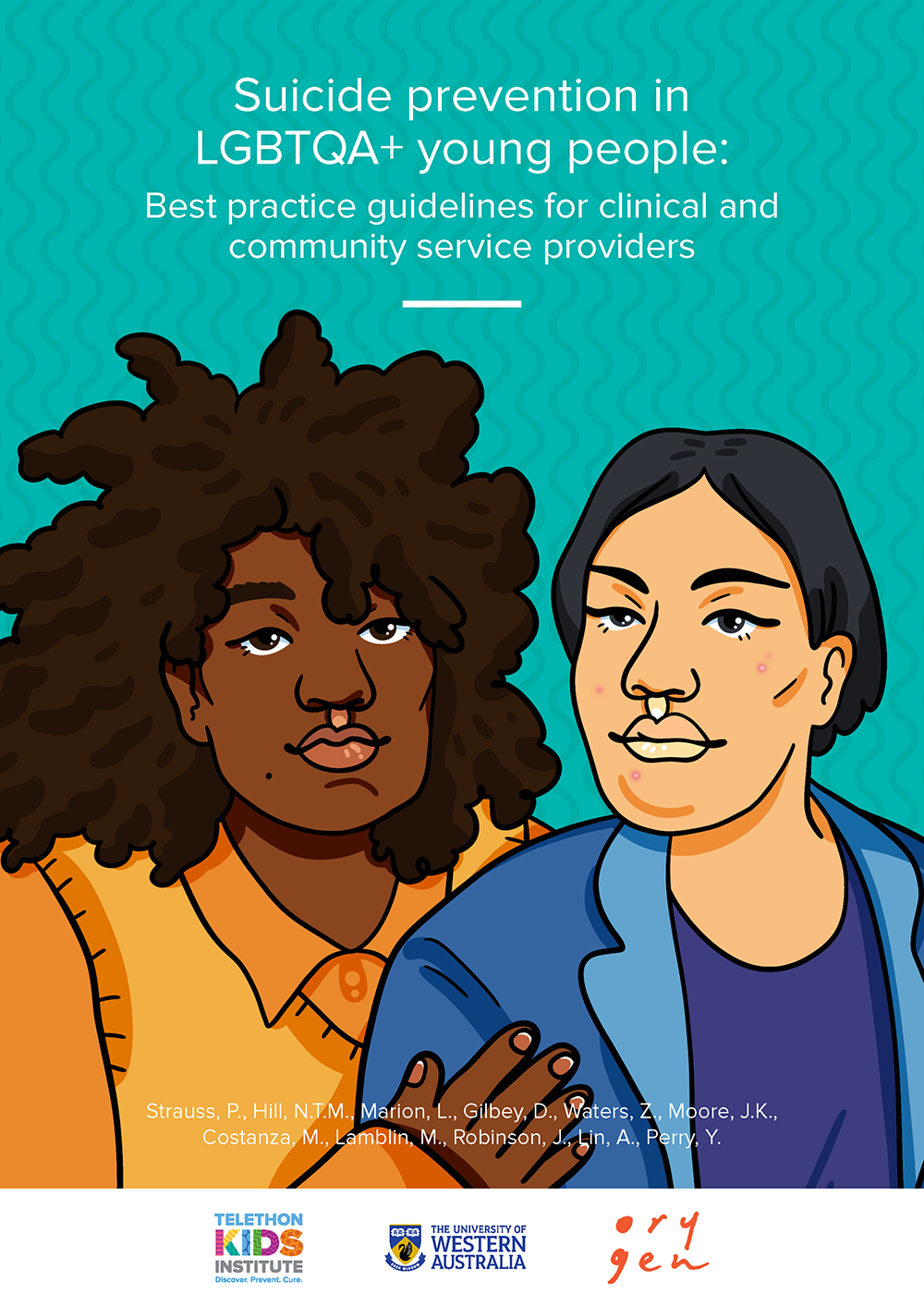
Micro-encounters like going to a medical appointment make up the fabric of our lives, and for young LGBTQA+ people they can be fraught. With statistics showing young LGBTQA+ people are at a significantly greater risk of suicide and self-harm, The Kids Research Institute Australia has developed best-practice suicide prevention guidelines for health professionals and community service providers to help them create safe spaces for LGBTQA+ young people.
Sometimes, it’s the simple things that make a big impact, and for young LGBTQA+ people accessing mental health, medical or support services, that is especially true.
Simple things like being called by your chosen name, having access to a gender-neutral bathroom, or signs of non-judgemental acceptance of sexual diversity can make or break that young person’s engagement with a service.
Throughout Dr Yael Perry’s extensive work with LGBTQA+ young people, it became painfully apparent how many services were getting it wrong.
“I think there are a lot of medical and service providers who want to do better in this area,” Dr Perry said.
“Most people coming through their training as a GP or psychologist or a youth worker don’t get very much exposure to training around LGBTQA+ identities or health, so they are often very poorly equipped.
“Ten per cent of young people identify as LGBTQA+, so for anyone who works with young people, this knowledge is vital.”
 This lack of understanding, and its ability to cause real-world harm to marginalised young people, prompted the development of an extensive set of guidelines for care providers.
This lack of understanding, and its ability to cause real-world harm to marginalised young people, prompted the development of an extensive set of guidelines for care providers.
The guidelines, aimed at everyone from GPs, nurses and mental health workers to dentists, teachers and police officers, provide some of the most practical advice available for engaging with young LGBTQA+ people, as well as specific recommendations for assessing and supporting LGBTQA+ young people presenting with suicidal thoughts or behaviour.
The guidelines were developed with input from two expert panels – one made up of clinical and community service and/or research professionals, the other, young LGBTQA+ people with lived experience of suicidal thoughts or behaviour.
“Inclusive practice can make so much difference to so many people, even just by changing some administrative practices as a starting point,” Dr Perry said.
The guidelines, aimed at everyone from GPs, nurses and mental health workers to dentists, teachers and police officers, provide some of the most practical advice available for engaging with young LGBTQA+ people, as well as specific recommendations for assessing and supporting LGBTQA+ young people presenting with suicidal thoughts or behaviour.
The guidelines were developed with input from two expert panels – one made up of clinical and community service and/or research professionals, the other, young LGBTQA+ people with lived experience of suicidal thoughts or behaviour.

Inclusive practice can make so much difference to so many people, even just by changing some administrative practices as a starting point.
Dr Yael Perry

“For example: understanding why it’s important to have gender neutral bathrooms, giving people the opportunity to choose the name they want on their file even if it’s not their legal name, asking if they want their family or their chosen family involved:
“There are some really basic practices that a lot of people just don’t know about, so we’re hoping that that will be used by clinical services, but also trickle out into other parts of the community.”
Trans woman Dawn Keil, 27, who was part of the Youth Advisory Group that helped develop the guidelines, said having care providers who understood LGBTQA+ issues could make a world of difference.
“When you’re seeking out support services, you’re already stressed, and it may not even be related to your identity as a queer person,” she said.
“It’s just a layer of extra anxiety. If you go with your partner to an appointment, will they assume they are your friend? Or if you’re a trans person, will they misgender you or not respect your gender? It adds an extra layer of stress to an already stressful situation.”
Keeping LGBTQA+ young people engaged with services can literally be a matter of life and death.
One in three young LGBTQA+ people have attempted suicide, and for trans young people, it’s one in two.
“We know that the cause of their elevated mental health difficulties is not their identity, it’s other people’s response to their identity – it’s the stigma, the discrimination, and the systemic lack of inclusion,” Dr Perry said.
“So partly what we’re trying to do with these guidelines is address those systems-level approaches to young people so they feel welcome in healthcare and community settings, and they can have tailored care in the same services that other young people have access to.”
The comprehensive guidelines and detailed additional support resources will be shared with thousands of healthcare and community service providers nationwide, with the hope it will lead to real-life changes in practice.

Putting a rainbow flag out the front of your service but not knowing the difference between gender and sexuality is not enough.
Dr Yael Perry

“There needs to be meaningful understanding of the experiences and not just visible support.”
For Dawn Keil, change can’t come soon enough. “Every trans young person nowadays knows about the statistics for suicide and poor mental health for trans youth and it’s something that’s very keenly felt in the community,” she said.
“Sometimes these spaces can be the first place young LGBTQ+ people experience acceptance by broader society, so getting that right can have a profoundly positive impact.”
